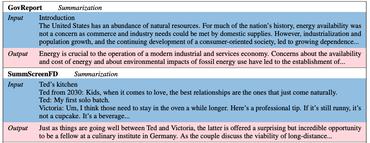Language Modelling
4455 papers with code • 51 benchmarks • 157 datasets
Language Modeling is the task of predicting the next word or character in a document. This technique can be used to train language models that can further be applied to a wide range of natural language tasks like text generation, text classification, and question answering.
Historically, language modelling was done with N-gram language models (which still have niche uses), but since the 2010s neural language models took over, and starting from the 2020s SOTA was achieved exclusively with large language models (LLMs).
A model's language modeling capability is measured using cross-entropy and perplexity. Some datasets to evaluate language modeling are WikiText-103, One Billion Word, Text8, C4, The Pile, among others.
Some notable state-of-the-art language models include:
Check below for all state-of-the-art models.
Here are some additional readings to go deeper on the task:
- Language Modeling - Lena Voita
( Image credit: Exploring the Limits of Language Modeling )
Libraries
Use these libraries to find Language Modelling models and implementationsDatasets
Subtasks
Most implemented papers
XLNet: Generalized Autoregressive Pretraining for Language Understanding
With the capability of modeling bidirectional contexts, denoising autoencoding based pretraining like BERT achieves better performance than pretraining approaches based on autoregressive language modeling.
Longformer: The Long-Document Transformer
To address this limitation, we introduce the Longformer with an attention mechanism that scales linearly with sequence length, making it easy to process documents of thousands of tokens or longer.
Recurrent Neural Network Regularization
We present a simple regularization technique for Recurrent Neural Networks (RNNs) with Long Short-Term Memory (LSTM) units.
On the Variance of the Adaptive Learning Rate and Beyond
The learning rate warmup heuristic achieves remarkable success in stabilizing training, accelerating convergence and improving generalization for adaptive stochastic optimization algorithms like RMSprop and Adam.
The Pile: An 800GB Dataset of Diverse Text for Language Modeling
Recent work has demonstrated that increased training dataset diversity improves general cross-domain knowledge and downstream generalization capability for large-scale language models.
BioBERT: a pre-trained biomedical language representation model for biomedical text mining
Biomedical text mining is becoming increasingly important as the number of biomedical documents rapidly grows.
Variational Autoencoders for Collaborative Filtering
This non-linear probabilistic model enables us to go beyond the limited modeling capacity of linear factor models which still largely dominate collaborative filtering research. We introduce a generative model with multinomial likelihood and use Bayesian inference for parameter estimation.
Generating Sentences from a Continuous Space
The standard recurrent neural network language model (RNNLM) generates sentences one word at a time and does not work from an explicit global sentence representation.
ELECTRA: Pre-training Text Encoders as Discriminators Rather Than Generators
Then, instead of training a model that predicts the original identities of the corrupted tokens, we train a discriminative model that predicts whether each token in the corrupted input was replaced by a generator sample or not.
Cross-lingual Language Model Pretraining
On unsupervised machine translation, we obtain 34. 3 BLEU on WMT'16 German-English, improving the previous state of the art by more than 9 BLEU.




















































 IMDb Movie Reviews
IMDb Movie Reviews
 Pubmed
Pubmed
 Penn Treebank
Penn Treebank
 WikiText-2
WikiText-2
 C4
C4
 WikiText-103
WikiText-103
 BookCorpus
BookCorpus
 The Pile
The Pile
 BIG-bench
BIG-bench
 OpenSubtitles
OpenSubtitles



